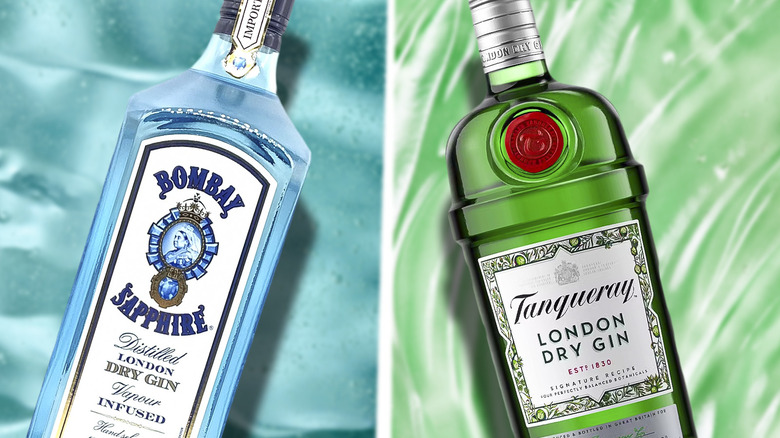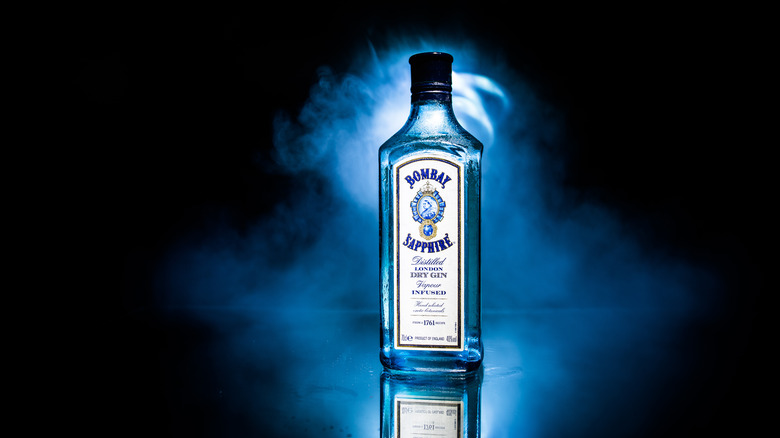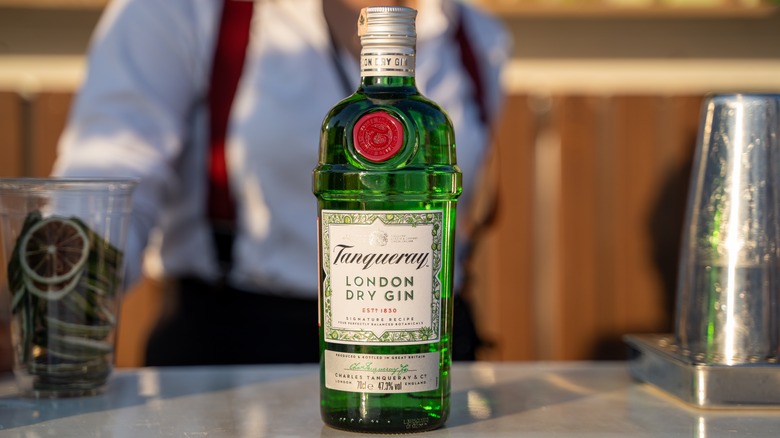Tanqueray Vs Bombay: The True Difference Between The 2 Gin Brands
Tanqueray and Bombay are two of the most popular brands of gin, and the flagship spirits of each are likely to be found in nearly every bar from Singapore to Tijuana. Tanqueray London Dry Gin is considered by many to be the poster child of the London dry gin category — a true gin lover's right-hand man. Bombay Sapphire is also a London dry gin, but it's earned a reputation as a renowned gateway gin due to its muted botanicals and sweet citric nose. Perfect for the gin-curious but uninitiated, it offers a smoother profile that fails to offend even the most sensitive of palates.
Gin is a clear spirit that is very similar to vodka but with the addition of botanicals, which are herbs, berries, bark, and other spices that give gin its distinctive flavor profile. The star of the show is juniper berry, which is included in every gin regardless of style. The other main botanicals include coriander seeds, angelica root, and citrus peels. Beyond these four typical ingredients, each gin picks and chooses from hundreds of other potential botanicals to create its distinct flavor.
Breaking Bombay
Bombay Sapphire is a citrus-forward gin that excels at balancing flavors. It has many critics in the gin community, possibly due to how restrained its flavors can be, but that hasn't stopped it from achieving widespread success. As far as gins go, it's a relatively new spirit. The origin of gin goes back centuries, but the Bombay Sapphire we have today first arrived on the scene in the 1980s, when vodka was king.
Bombay did two things that differentiated it from its competitors and led to the global dominance we see today. The first thing they did was change how the botanicals were added. Many gin distillers at the time were using a distillation method called steeping, where they would throw the botanicals in with the distillate and steep it like tea. Bombay decided to use a method called vapor infusion, where the botanicals are hung in the air above the distillate, allowing the steam to pass through and collect the oils before condensing back down.
The second thing Bombay did was emphasize the botanicals long before craft liquor became a thing. Bombay has an official Master of Botanicals, who is in charge of maintaining the quality of the ingredients used. The brand also chose to display all of the gin's ingredients right on the bottle to emphasize to the customer how flavorful the liquor was. This was an unusual move, as gin recipes were a closely guarded secret, as many still are today.
Tanqueray is a titan
For the traditionalists out there, Tanqueray comes in with a deep, singular voice of juniper berry. Though there are other notes that peek around from the edges, juniper reigns supreme in the nose, on the tongue, and down through the finish. Gin's guiding light is the juniper berry, and Tanqueray holds true to that even if modern gins have shifted toward more balanced flavor profiles.
Tanqueray is noticeable for its minimalist style, including only four botanicals: juniper berry, coriander seeds, angelica root, and licorice. You may have noticed the lack of citrus, which has become extremely common in more contemporary gins, but that doesn't stop Tanqueray from having a perplexingly citric profile. Tanqueray was born in the early 1800s and has been enjoyed just as it is for generations. It continues to be a cherished member of the gin bar and, if you've ever tried it, you know just how wonderful a simple collection of four ingredients can be.
Tanqueray is distilled four times which is well above the typical double distillation, helping the spirit achieve its iconically smooth taste. It does have a relatively high ABV for a gin at 47.3%, but Bombay isn't far behind at 47%. Both gins do have a noticeable burn because of this, though. At the end of the day, Tanqueray is a simple gin, and its elegance reminds us of simpler times.


